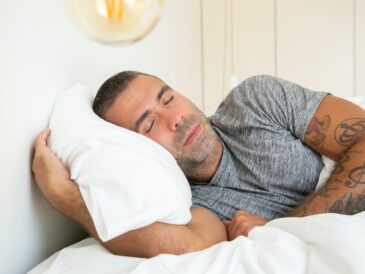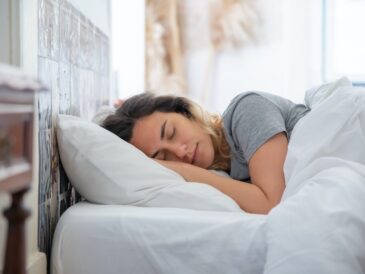If your mattress contains biological stains such as urine, sweat or blood, use an enzyme cleaner or hydrogen peroxide mixed with water in a spray bottle to spot clean the area. Be sure to blot rather than rub the stain for maximum effectiveness, and allow your mattress to fully dry before making it again.
Vacuum
Regular mattress cleaning will help prevent dust mites, odors and debris from amassing on it. Begin by removing blankets, pillows and sheets then vacuuming using the upholstery attachment on your home vacuum cleaner; finally use an angled crevice tool on any nooks and crannies to suction out any trapped dirt.
Next, use a damp sponge soaked in mild household cleaning solution to sanitize the mattress surface. If possible, take your mattress outside so UV light can kill bacteria more effectively.
Blood, sweat and urine stains can be safely spot cleaned using either commercial enzyme cleaners or homemade solutions made up of equal parts water and hydrogen peroxide. When applying either solution directly onto a cloth for spot cleaning, be sure to blot rather than rub.
Once your mattress is dry, apply a thin layer of baking soda powder. Baking soda has proven its ability to deodorize while simultaneously absorbing moisture from a mattress surface and neutralizing any unpleasant odors that might linger there. Let it set for several hours (or up to 24), before vacuuming up.
Baking Soda
Mattresses often go neglected when it comes to being cleaned regularly, resulting in them becoming stained and unpleasant smelling. Baking soda is an inexpensive and non-toxic cleaning solution which removes stains, deodorises and helps break down dirt and grime build-up on mattresses. When combined with white vinegar they create an effective combination which eliminates unpleasant odours leaving your mattress fresh and clean smelling!
Pouring baking soda over your mattress and leaving it for several hours (preferably overnight) should suffice to odour neutralization. Be sure to cover every area, especially any which have strong smells, for maximum effect. Once this time has elapsed, vacuum the mattress using an upholstery attachment in order to extract both baking soda and any odours it has taken up from within its surface area.
Deodorising your mattress requires only a few drops of your favourite essential oil such as lavender or rose to do the trick.
White Vinegar
White vinegar can help eliminate stubborn stains or unpleasant odors with ease. Simply mix equal parts water and vinegar in a spray bottle and spray directly onto stained areas; allow this solution to soak for several minutes before wiping it clean.
Use this mixture to remove vomit stains as soon as you notice them; the quicker it drenches the stain with vinegar, and you blot dry, the greater your chance of completely eliminating its smell without leaving behind a stain or scent.
Make a solution consisting of 2 tablespoons of baking soda mixed with one tablespoon of dish soap and three percent hydrogen peroxide; apply with a damp cloth onto your mattress for 24 hours; blot off excess baking soda before vacuuming your bed – this combination should remove many types of stains from your mattress!
Dish Soap
Even though you may wash sheets, pillow cases and blankets regularly, dirt, stains and sweat still manage to accumulate on mattresses over time. To restore its fresh and clean appearance, combine equal parts water and liquid dish soap (without bleach) in a spray bottle and use this solution on stained areas of the mattress before wiping down with damp cloth before leaving it air dry before remaking it with fresh linens.
If your mattress has biological stains such as blood, urine or vomit stains that won’t come off on their own, Tempur-Pedic suggests using a gentle mattress cleaner without bleach and specifically designed for mattress care. A damp sponge applied the cleaning solution onto cloth towels can blot at stains until they begin lifting; repeat if necessary. Once dry, sprinkle generous amounts of baking soda over it to neutralize odors and absorb any residual moisture before air-drying completely outside. Remaking may then occur.
Enzyme Cleaner
Mattresses can become breeding grounds for bacteria, fungi and allergy-triggering dust mites that feed off of body oils and sweat released while sleeping. These tiny creatures love dark places in which it stays cool – an environment ideal for these critters to live. Over time this could leave your mattress with an offensive odor or feel as well.
Stubborn spots left by spills or bedtime accidents can easily be removed with a gentle detergent or stain remover without bleach. Just apply some solution onto a cloth, wipe gently across the affected area and apply.
If your mattress is stained by biological matter such as urine, fecal matter, vomit or bloodstains, consider using an enzyme cleaner such as Bac-Out by Biokleen ($10 at Target) or Nature’s Miracle (available at pet stores). Follow their directions for application and allow it to sit overnight before vacuuming afterwards to remove any leftover residue. Finally, open your bedroom windows for fresh air circulation!
Hydrogen Peroxide
If biological stains such as urine and sweat don’t respond to enzyme cleaners, try creating your own peroxide solution (1 cup hydrogen peroxide mixed with 3 tablespoons baking soda and some drops of dish soap in a spray bottle). Spray or dab the mixture on any stained areas and let sit for at least an hour; the combination should help fade yellowing of urine/sweat stains while lifting some blood spots as well.
For severe blood stains, follow the same method used for pee and sweat stains but scrub with an old toothbrush instead of using a cloth. Or mix together a paste made of bicarb soda, salt and water; rub this onto the stain and allow it to dry – using fans if necessary to speed things along!
No matter the cause – be it biological stains, moisture spots or dust accumulation – mattress maintenance must remain part of a regular schedule. Make it part of your bed-making ritual once every 4-5 times you change sheets to ensure optimal restful slumber.




